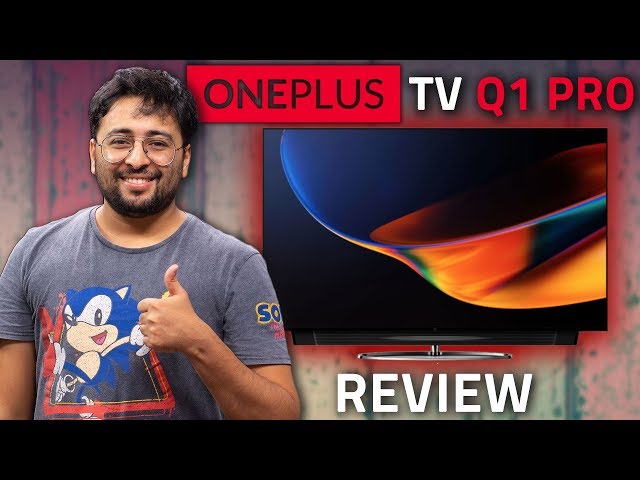The type of screen has been almost as significant as the TV brand itself, ever since old-fashioned CRT televisions made way for flat-screen panels. The earliest flat-screen TVs had plasma or CCFL-backlit LCD screens, but both of these technologies are no longer in use commercially. Instead, we have three common types of screens today – OLED, QLED, and LED – and one of these types of screens is available for most commercially available televisions.
We’ll compare these three kinds of screens in this article and outline their benefits and drawbacks. This will help you determine the form of TV is better for you, based on your budget and viewing habits. If you are looking to buy a new one soon, we have also suggested some televisions in each group that you can look at.
The best: OLED

Of the new and easily accessible forms of television screens, OLED is king. With Organic Light-Emitting Diode (OLED) technology, in response to an electric current, every pixel is capable of emitting its own light. Also, individual pixels can be completely turned off. As a consequence, OLED TVs are capable of deep blacks, high contrast ratios, and realistic colours. OLED TVs are smaller and have narrower bezels than those that use other technology for TV displays, since there is no need for a backlight.
Since it is possible to turn off each individual pixel as needed, black levels are excellent, and a non-issue is backlight blooming. On OLED TVs, you even get better viewing angles. One major downside is that these TVs do not get as bright as a QLED or LED TV, and HDR material naturally does not reach the optimum brightness on other types of TVs it is capable of. However, this is typically a minor concern, because OLED televisions more than compensate for their lower brightness with better image quality overall.
The Most Affordable: LED

All of this also comes at a price; today’s OLED TVs are among the most costly on the market. Huge sums will set you back with premium series such as the Sony A9G and LG C9, and even the most affordable OLED televisions cost just under Rs. 1,00,000. This also has to do with the fact that producing OLED TVs at screen sizes of 55 inches and above just makes business sense. When you have a high budget and want the highest possible picture quality, you should get an OLED TV.
There’s a fair chance that your entire shortlist is packed with LED choices if you’re looking for an affordable flat-screen television for your home today. These televisions usually use TFT-LCD panels with LED backlighting, more appropriately referred to as LED-backlit LCD technology, providing better brightness and colours than early CCFL-backlit panels. The need for an always-on backlight means that blacks are never really black.
There are two major types within the LED technology range – IPS (In Plane Switching) and VA (Vertical Alignment). Each style has its own advantages and disadvantages; IPS has better viewing angles, while in dark rooms, VA has better contrast levels and performs better. Curved LED TVs were also popular a few years ago, but this isn’t something that we see very much anymore.
Some TVs provide local dimming, which means that parts of the screen can be made darker for black enhancement. Most LED TVs, however, have a single backlight that controls the entire LCD screen, and are therefore unable to make the deep blacks that you can see on OLED TVs.
Since this type of TV screen uses technology that has been around for a while now, it is the most inexpensive to produce at all sizes and resolutions and is economical. An LED TV measured anywhere between 24 inches and 85 inches can be easily purchased, and even beyond that. On a strong LED TV, you can also typically get greater peak brightness.
This technology, as well as more costly models such as the Sony X95G series, is used for value-for-money options such as the Vu Premium 4K TV and Mi TV 4X. For better black levels, some options, such as the LG SM9000, use local dimming, while still benefiting from better brightness. If you’re on a tight budget, LED TVs are best considered, but can also make sense if you want a lot of features without stretching to QLED or OLED price ranges.
The middle-ground: QLED

While we consider it to be the middle ground between LED and OLED displays, when it comes to the real technology and hardware involved, QLED is closer to LEDs. QLED TVs are basically LED TVs, but with a quantum-dot filter that allows better colours to be created between the LED backlight and the LCD layer. As a result, the colours and brightness of QLED TVs are better than LED and most OLED TVs, but stop short of the contrast levels and deep blacks provided by OLED TVs.
The higher cost of making QLED panels means that they are not commonly used in smaller TVs, with the starting point for this type of screen being 43 inches. Most modern QLED TVs are manufactured by Samsung, but in India, some other manufacturers such as OnePlus, TCL, and Vu also sell QLED TVs; these typically have Samsung-based panels.
The Samsung Frame line, which begins at Rs. 84,990, and the OnePlus TV range, which is priced from Rs. 69,900 onwards, are common QLED alternatives available in India. These TVs deliver better colours at slightly higher prices than most LED TVs, but they aren’t as good as OLED TVs as a whole.
The future: microLED and Mini-LED
Although consumer televisions are present in the three forms mentioned above, new types of screen technology such as microLED and mini-LED will be seen in the future. These are intended to rival OLED, but with the traditional advantages of LED-based technologies for efficiency and cost. These are still some time away, however, and starting with or restricted to only a handful of manufacturers and brands can be relatively expensive.
Humbly Request To All Visitors!
If you found above both downloading link expired or broken then please must inform admin by fill this Contact Us! Form


